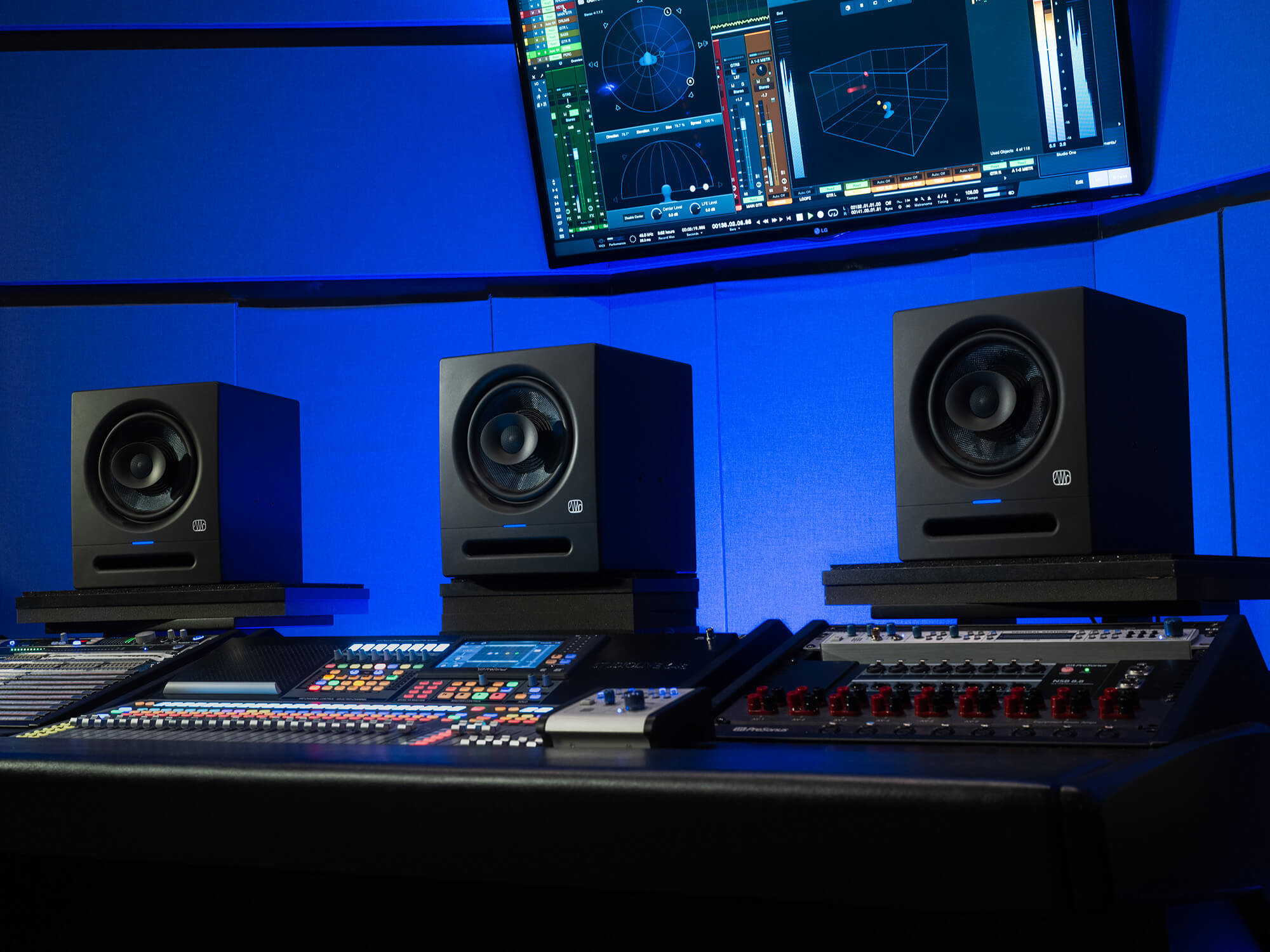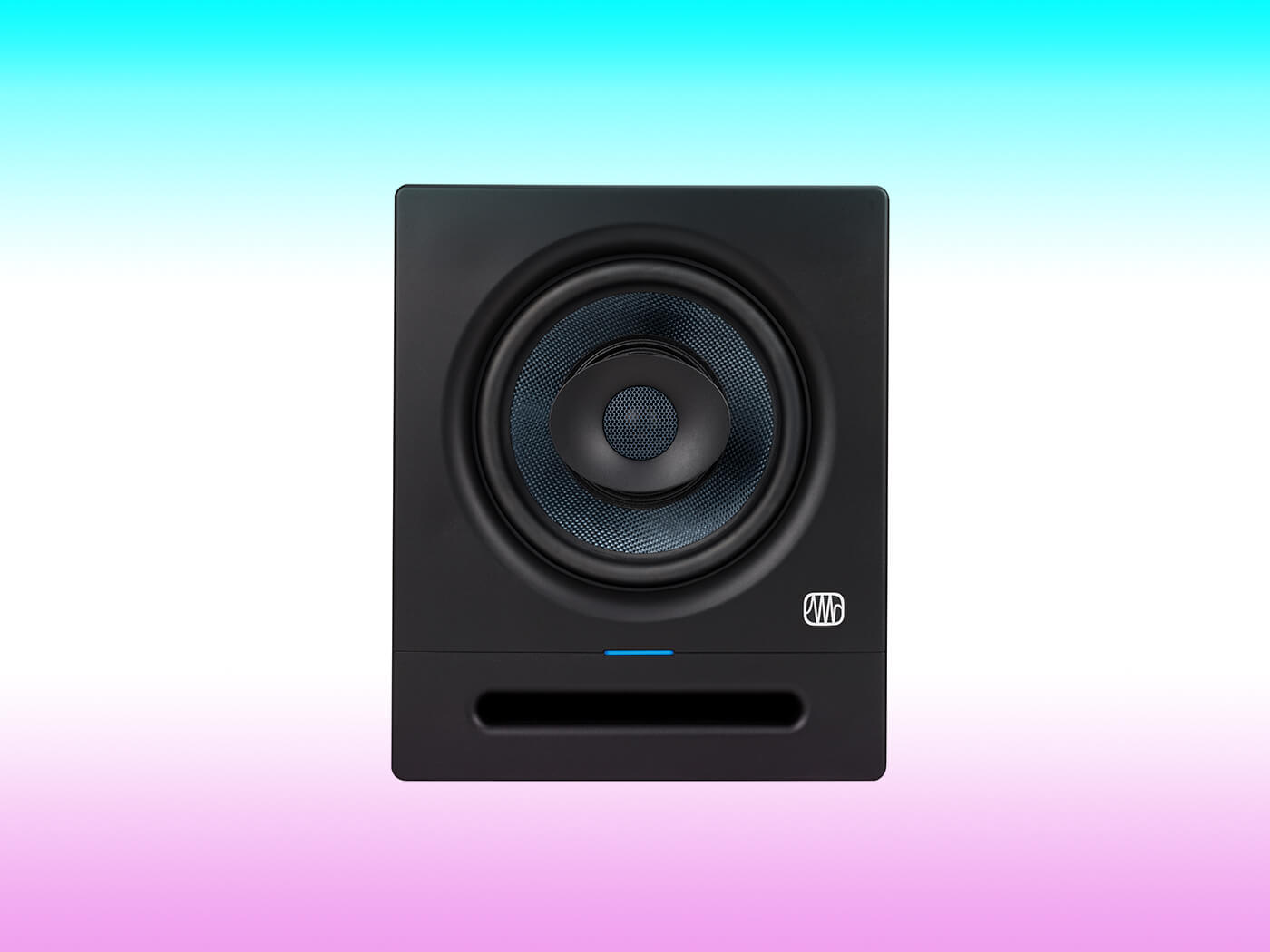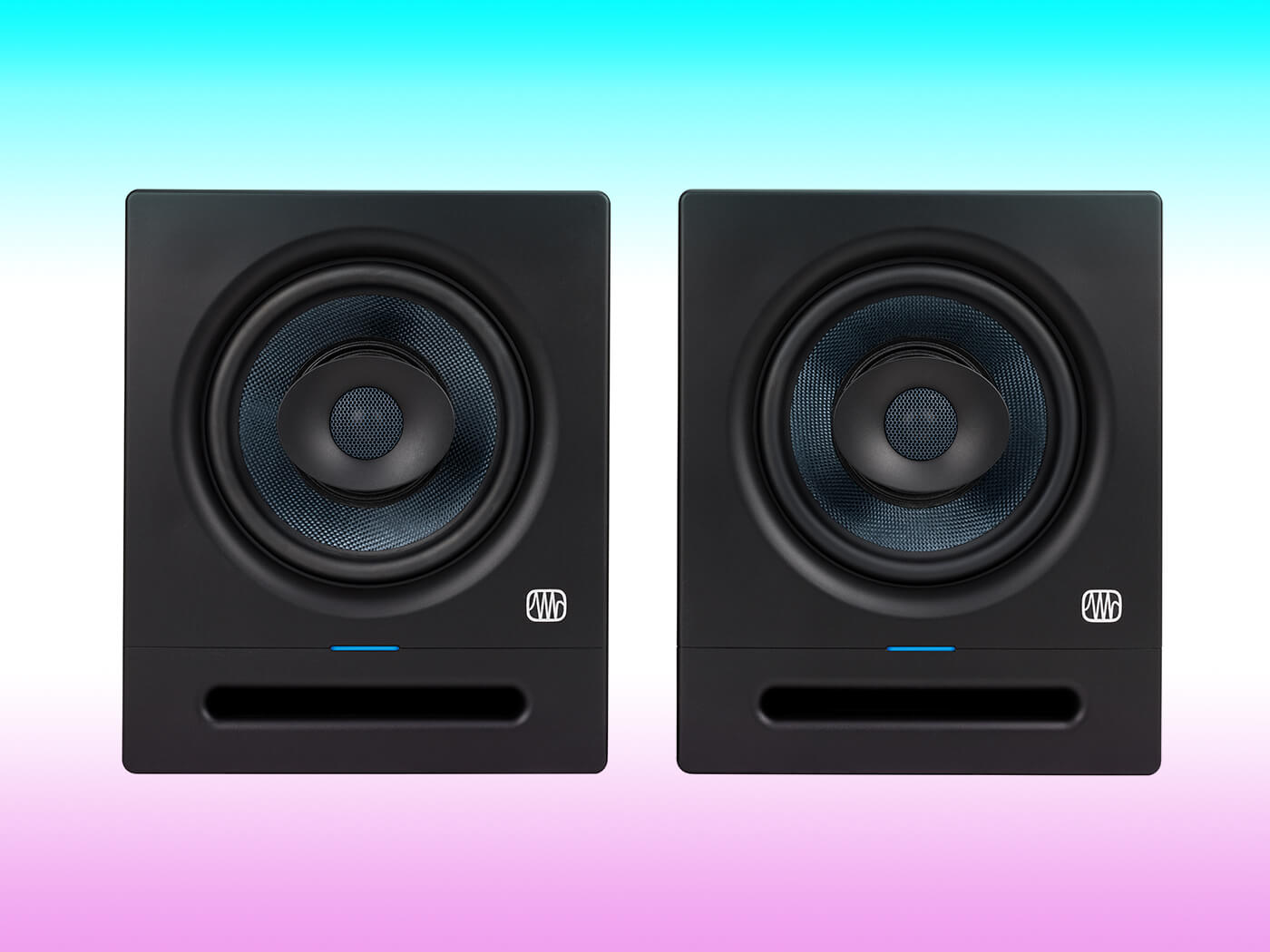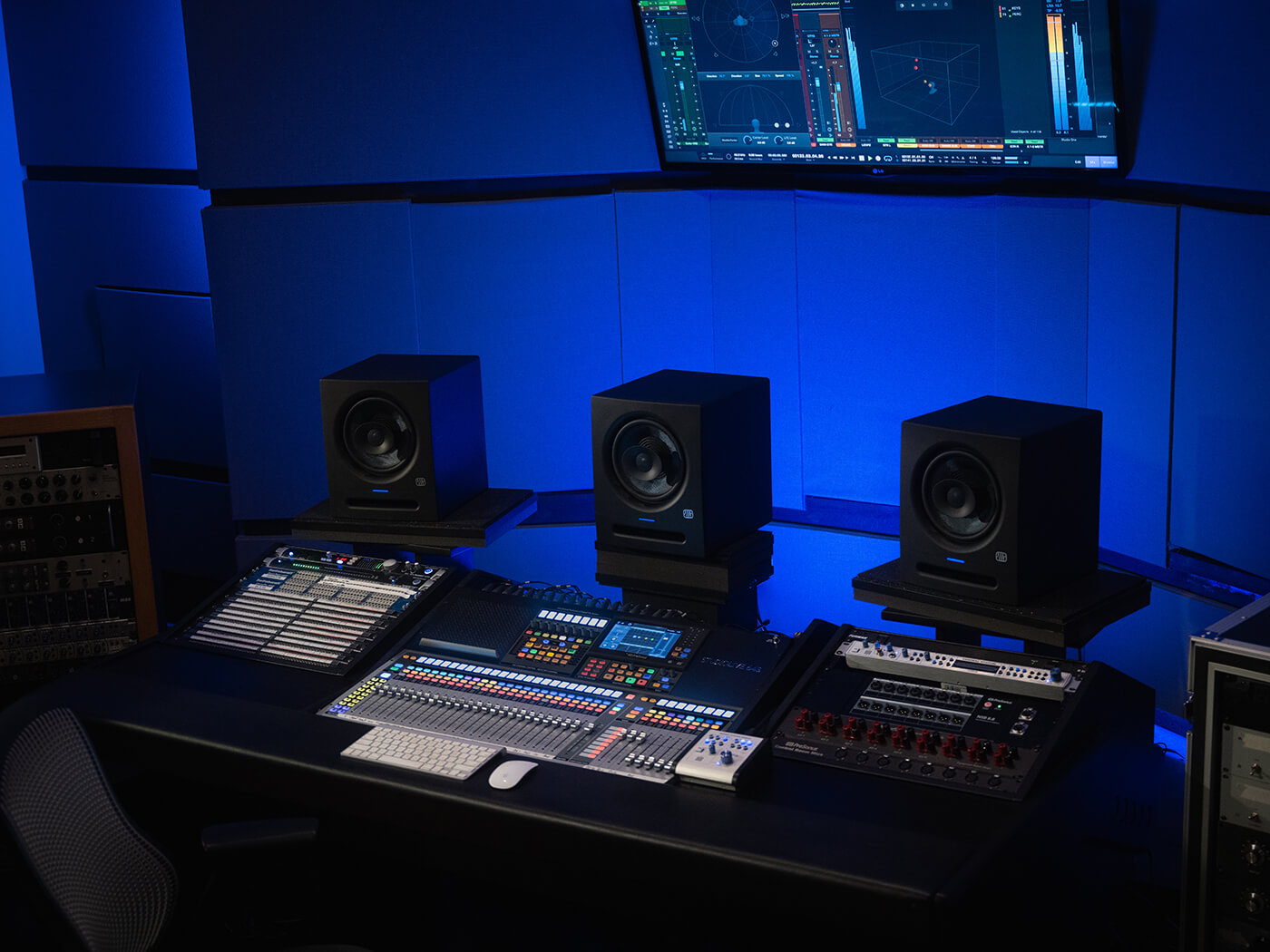PreSonus Eris Pro 8 packs a big, articulate sound for main monitoring and immersive masterpieces
How does the flagship model in the new Eris range shape up?

A trio of PreSonus Eris Pro 8 monitors on a studio desk
Review Overview
Our rating
8
Our verdict
⊕ Neutral mids and highs
⊕ Coaxial design useful for imaging and localisation — particularly in an immersive audio array
⊕ Wall/ceiling bracket mounting points
⊕ Pairs easily with smaller Eris Pros to form a surround set
⊖ EQ controls are too basic
⊖ Some self noise
⊖ Slightly more expensive than some competitors
£355 / $499 each (street price), presonus.com
The Pro 8 studio monitor sits at the pinnacle of the recent Eris line shake-up from PreSonus, as the model with the largest woofer. In contrast to the near-field Eris Studio 5 we recently looked at, the Pro 8 is designed to be used in a main monitor pair (typically at a midfield distance), with immersive audio firmly in mind.
Here, the growing influence of Dolby Atmos manifests itself in the form of a two-way coaxial driver for pinpoint localisation accuracy and improved time alignment of frequencies recaching the listener — both crucial to an accurate immersive experience — plus there’s also mounting holes on the sides for wall and ceiling brackets (really welcome, as many other monitors require expensive mounting plates/brackets, or else some serious DIY tinkering to make it affordable).
The form factor is reminiscent of Tannoy’s classic coaxial (dual concentric) designs, which tend to be front-ported just like the PreSonus.
With its eight-inch woofer, 1.25-inch attached tweeter and 140 Watts of amplification, the Pro 8 is a hefty beast, weighing in just short of 10 kg per side. For those with concerns about such big monitors being slung from the ceiling or taking up too much space in side and rear surround positions, PreSonus has launched more dainty Pro 4 and Pro 6 variants that can be partnered with the Pro 8s, and there’s also a matching 10-inch active sub to complete the set.

What controls are on the PreSonus Eris Pro 8?
The Pro 8 has the same controls around the back as the Studio 5, namely variable gain, a low-cut filter, plus a fixed mid band and high shelf. Room boundary correction is present once again, but just like the Studio 5, there’s no desktop filter. It could be argued that such an omission is more excusable at this more premium end of the range, where a typical user may well have access to room equalisation software, but it’s frankly unfortunate that such a simple yet crucial facility isn’t there.

What does the PreSonus Eris Pro 8 sound like?
Given its eight-inch woofer, the Pro 8 gives a really solid bass extension, easily reaching into the sub bass region but with plenty of articulation and not overly boomy — as with the Studio 5, front-facing ports help in this respect.
The overall impression could be described as flat and honest — mids and highs sit comfortably with the tight low end without being particularly hyped in any way to form a convincing whole, and the coaxial arrangement is great for stereo imaging (we missed this when switching back to our own Genelec two-ways).
There is a self noise issue similar to that we experienced with the Studio 5 — slight hum and hiss, but potentially not as noticeable in this case as these monitors would be placed further from the listening position.

Listen awhile
We take a long listen to the Pro 8s on our own mixes and a whole host of favourite reference tracks over a period of multiple weeks.
Turning to Jamie Woon’s synth-layered Sharpness, sub bass lines and kick come across confidently, whilst highs are suitably present without ever causing discomfort. With third-party software room equalisation disabled — and the Pro 8s on our desk — there’s a problematic, disappointing low-mid hump that leads to congestion in this pad-heavy range of the mix. With software EQ switched on, everything is tidied up and has its rightful place in the mix.
Once more, the jazzy number Little Fugue (Jacques Loussier Trio) deserves a mention in the listening section, with an absolutely epic combination of stick attack and check thump on the thundering floor tom hits in the opening section, and crisp under-snare detail to boot. The grand piano sounds full and natural and all the important details of the double bass line are revealed. Learning from our experiences, we do have some low mids notched out with software EQ, however.

Should I buy the PreSonus Eris Pro 8?
In main monitor duty, the Pro 8 is a highly capable and truthful speaker with plenty of bass extension and clarity. The lack of more detailed equalisation controls is unfortunate, but might not affect users that already have software equalisation running. The Pro 8 really comes into its own in surround and immersive set-ups, where the pinpoint localisation accuracy of its coaxial driver provides a tangible advantage alongside an integrated mounting option. That all said, it faces stiff competition from the Kali Audio IN-8, a three-way monitor with coaxial mid and bass speakers. If the street price of the PreSonus drops over time, this might become a closer race.
Key features
- Active studio monitors
- Coaxial design with 8-inch woofer and attached 1.25-inch tweeter
- Front ported
- 35 Hz – 20 kHz frequency response
- EQ customisation: High and Mid dials (-/+ 6 dB at 10 kHz and 1 kHz); Low Cut filter (80 Hz / 100 Hz); Acoustic Space switch (-2 dB / -4 dB)
- Inputs: XLR, TRS jack and unbalanced RCA
- Variable input gain
- 140 W amplifier (75 W woofer / 65 W tweeter)
- Standby mode
- Weight: 9.5 kg each